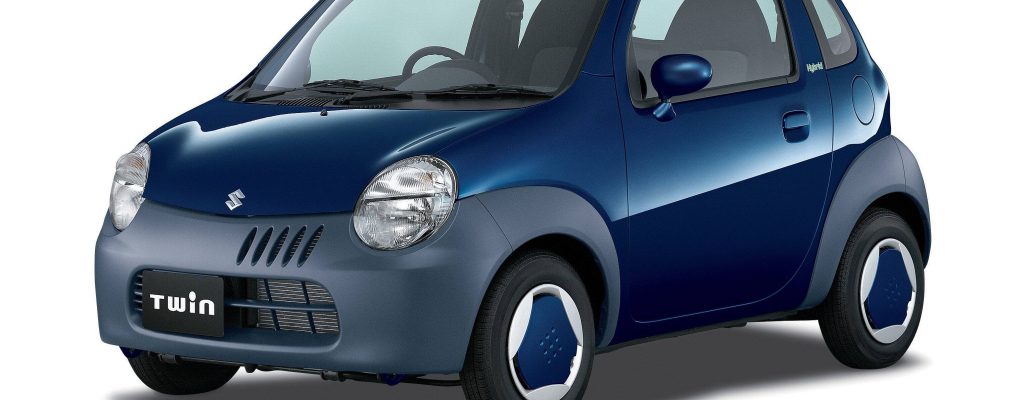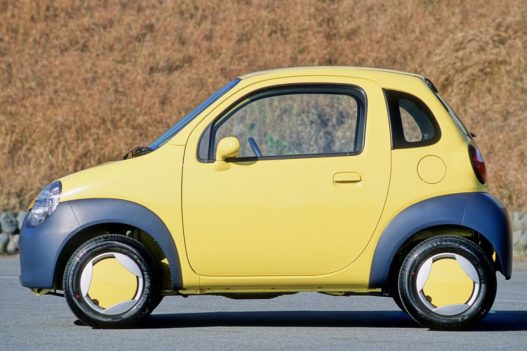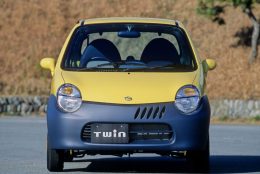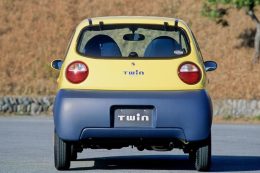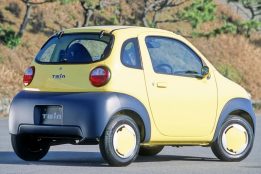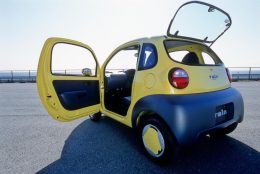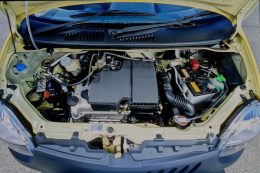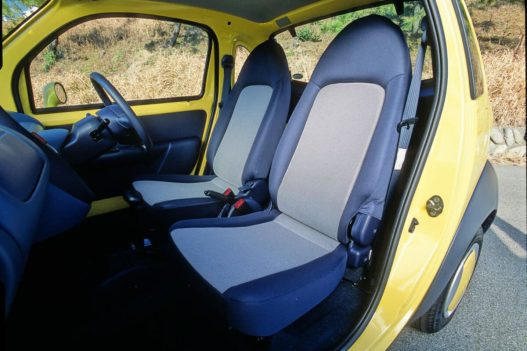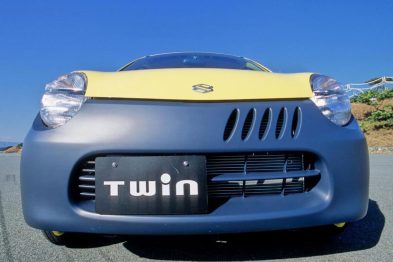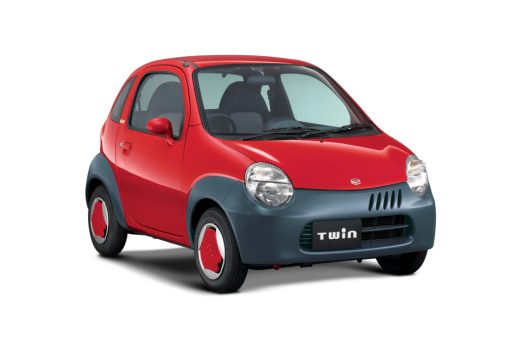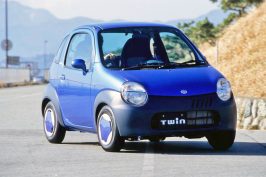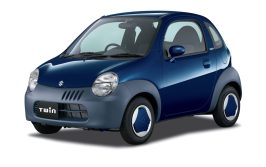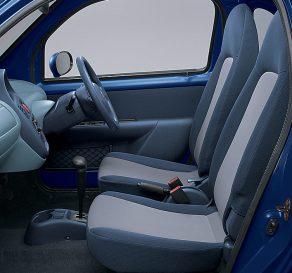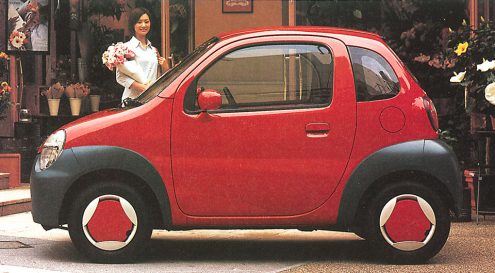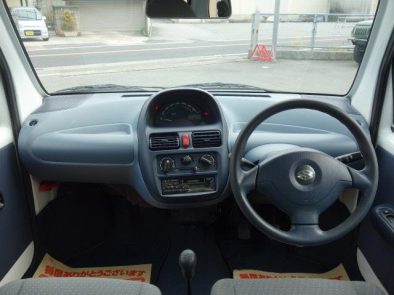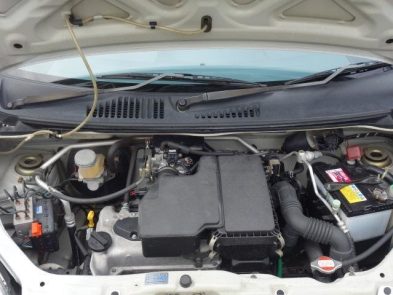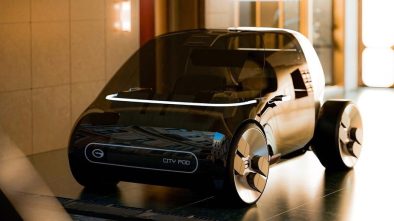Suzuki Twin
The Suzuki Twin is a supermini produced by the Japanese car manufacturer Suzuki. Due to its small size and engine power, it is considered a kei car in Japan and is therefore eligible for tax breaks. The car was first shown as a design study at the 1999 Tokyo Motor Show, and three years later the production model was unveiled at the same show. Approximately 10,000 units were sold between January 2003 and October 2005.
The Suzuki Twin, designed as a front-wheel drive two-seater, is 2.74 meters long, 1.48 meters wide and 1.45 meters high and has a turning circle of about eight meters. It is about 24 centimeters longer, three centimeters narrower and four centimeters lower than the Smart Fortwo, which is comparable in design and space. Kerb weight is around 560 to 590 kilograms for the gasoline model and around 700 kilograms for the hybrid version, with a maximum payload of 150 kilograms.
The gasoline engine of the Suzuki Twin has three cylinders with a total displacement of 660 cubic centimeters. The maximum power output is 32 kilowatts (44 hp), the top speed is about 130 kilometers per hour. From a standing start, the car accelerates to 100 kilometers per hour in about 32 seconds. The gasoline version is equipped with either a manual 5-speed transmission or an automatic transmission, while the hybrid version is equipped with an automatic transmission only.
A start-stop system shuts off the engine when the vehicle is idling for long periods and restarts it when the accelerator is pressed. Average fuel consumption is about 4.5 liters per 100 kilometers for the regular gasoline-engine version and less than three liters per 100 kilometers for the hybrid model, which is also equipped with a five-kilowatt (seven-horsepower) electric motor.
After Toyota and Honda, Suzuki was the third manufacturer to develop and market a production hybrid vehicle, the Suzuki Twin, and sell it to consumers in large numbers. The Twin is the first and only hybrid kei car and the smallest hybrid model ever sold. It is therefore seen as a demonstration of the possibilities of downsizing hybrid technology. One drawback was the high price of around 9,500 euros in relation to the size of the car, compared with 3,500 to 6,200 euros for the gasoline version.
The main target group was customers whose driving consists exclusively or mainly of city driving, since the fuel economy advantage of the hybrid drive is greatest over short distances and at low speeds. The Suzuki Twin’s small size also makes it easier to find a parking space and maneuver in tight traffic. For these reasons, it has been sold mainly to government and service companies.
